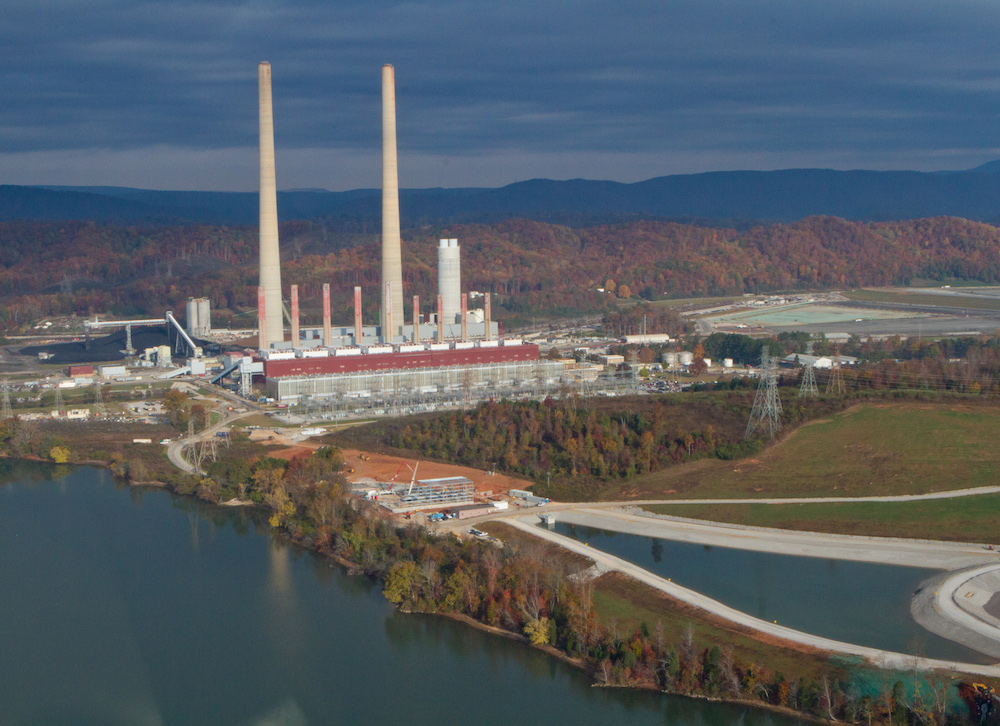Front Porch Blog

TVA wants to replace the coal-fired Kingston Fossil Plant with methane gas plants. Public domain photo
The rules:
- Cap greenhouse gas emissions from power plants
- Set new wastewater discharge standards for coal-fired power plants
- Extend cleanup requirements to hundreds of old coal ash dumps across the country
- Tighten limits on mercury and other airborne toxics emitted by power plants
“Today’s announcement by the Biden-Harris administration marks a huge win for the country — and especially communities whose residents have suffered and fought the impacts of power plant pollution for decades,” said Appalachian Voices Executive Director Tom Cormons when the rules were released. “We applaud the administration for finalizing these rules that require companies to reduce and clean up the pollution they have pushed on people and the planet for far too long. This should spur monopoly utilities to rethink their plans to spend billions of their customers’ dollars on polluting gas-fired power plants and instead lean into clean and renewable energy investments that save people money while creating good jobs.”
Under the new regulations, coal plants have to cut or capture 90% of their carbon dioxide emissions under the emissions rule if they plan to stay open beyond 2039. New gas-fired power plants will also be required to cut or capture 90% of their carbon emissions by 2032.
Carbon capture and storage is an expensive technology. But power companies don’t have to go down that road — to provide affordable and clean energy, utilities should go with proven, low-cost, highly reliable renewable energy technologies instead.

When a Duke Energy coal ash pond failed in 2014, waste entered the Dan River through this pipe. Photo by Appalachian Voices
Coal-fired power plants use a lot of water to generate steam to turn turbines and to clean smokestack scrubbers, among other things. The wastewater from the process ends up contaminated with a number of toxic elements, including mercury, arsenic, selenium, lead and bromide. The new rule requires coal-fired power plants to upgrade wastewater treatment systems to remove these contaminants.

Stock photo
“In the South, where the Tennessee Valley Authority and Duke Energy share legacies of major coal ash spills and are also advancing the two largest gas plant build-outs in the nation, these new rules will be transformative for communities who have been burdened with expensive, polluting and unreliable energy systems,” said Director of Public Power Campaigns Bri Knisley. “People in our region deserve clean air, safe jobs, affordable and reliable electricity, and EPA’s new rules move us much closer to that promising future.”
In addition to greenhouse gasses that are contributing to climate change and all its adverse effects, coal-fired power plants also emit mercury and other toxic metals. The fourth rule finalized last month further tightens Mercury and Air Toxics Standards for coal-fired power plants, reducing mercury emissions by up to 70%.
Combined, these rules work to ensure that utilities can no longer push the costs of their pollution onto nearby residents, who end up paying for the health damages, and onto society as a whole when it comes to paying for the consequences of climate change. The rules will lead to billions of dollars in public health benefits, saving thousands of lives and reducing the number of asthma attacks and other pollution-related illnesses.
“We’re thrilled about the new clean energy jobs that these rules will help bring to Appalachian communities,” said Chelsea Barnes, Director of Government Affairs and Strategy. “We know these rules mean an enormous transition for workers in the coal and gas industries, but with the incentives included in the Bipartisan Infrastructure Law and the Inflation Reduction Act to invest in communities and good clean energy jobs, we are more than ready to continue our work to help power this transition.”
PREVIOUS
NEXT
Related News

Leave a comment
Your email address will not be published. Required fields are marked *
